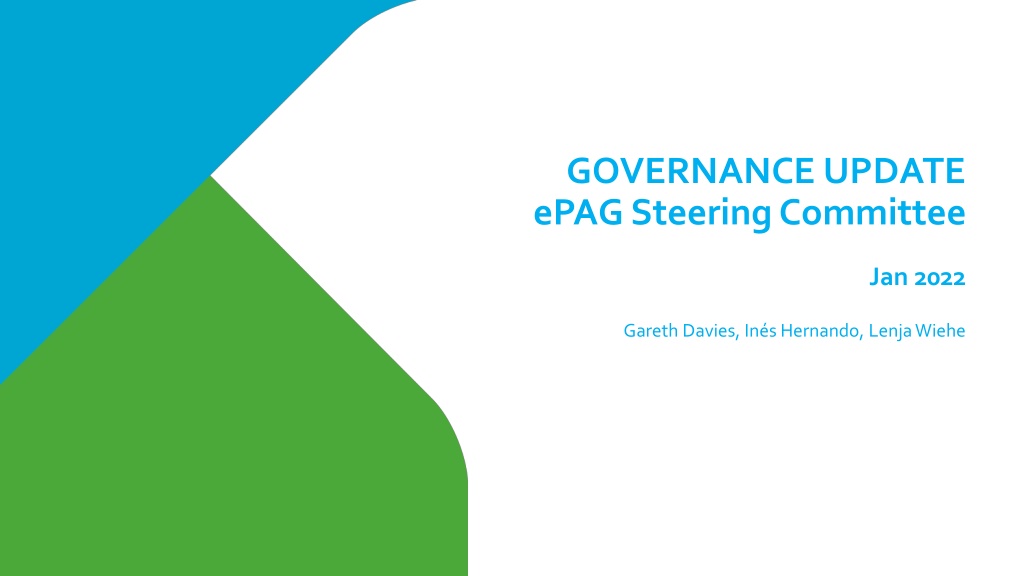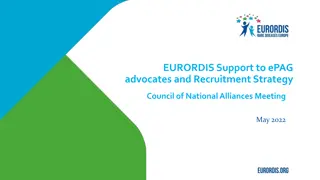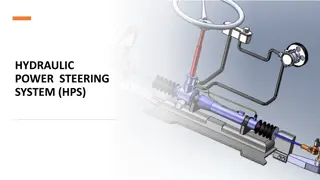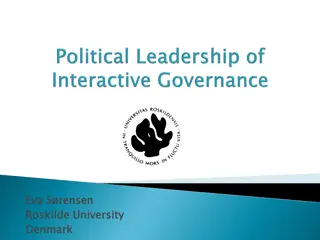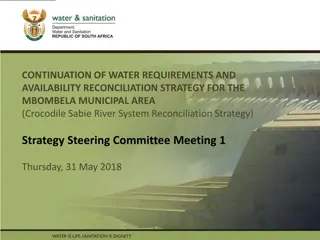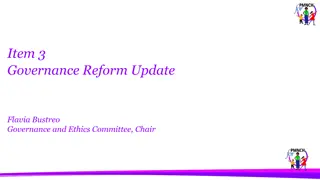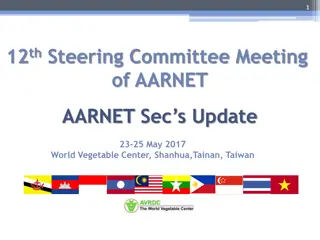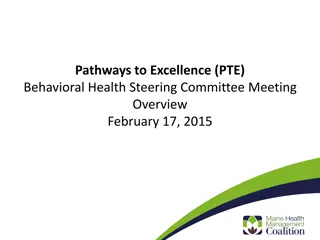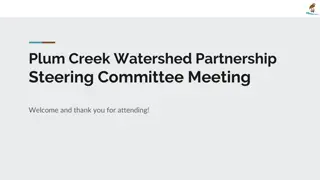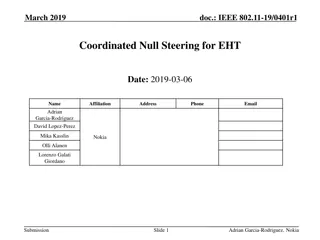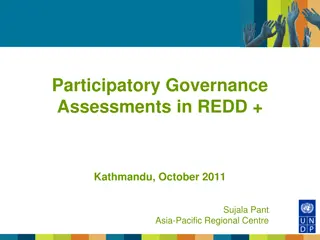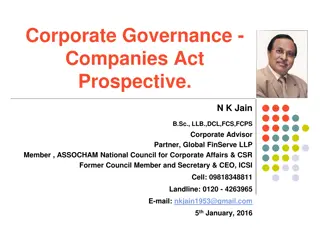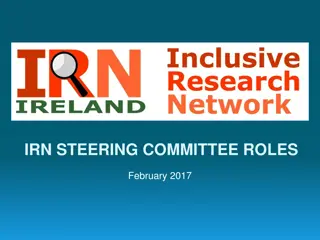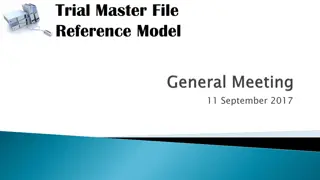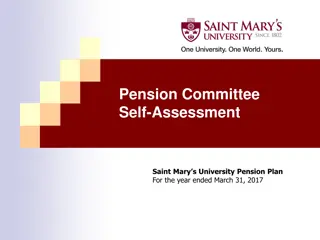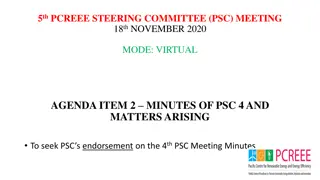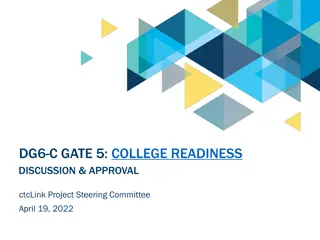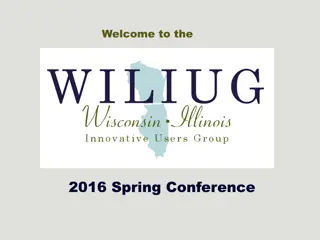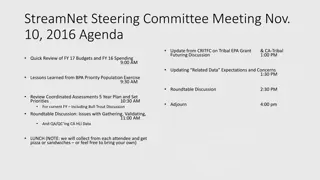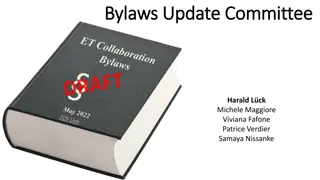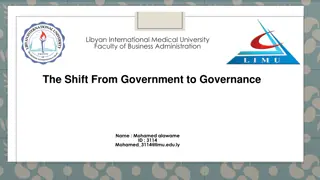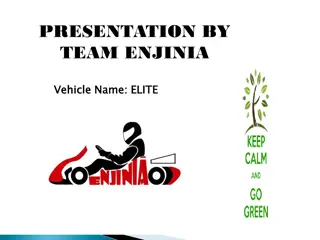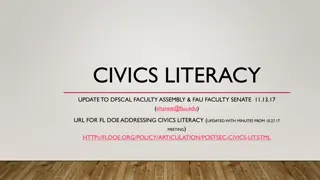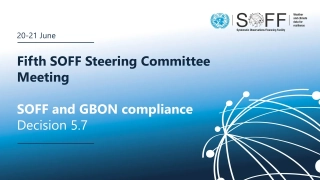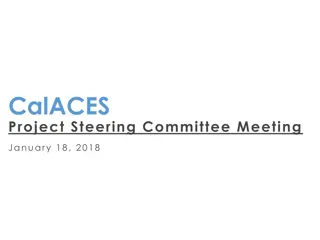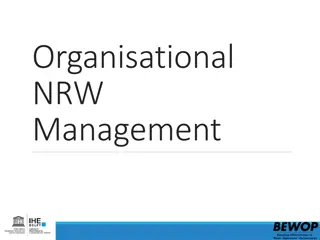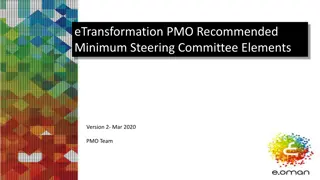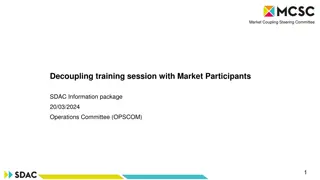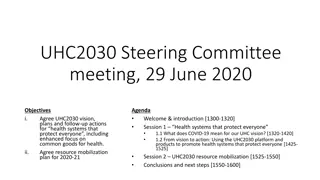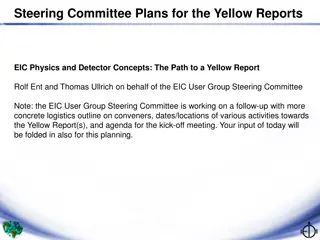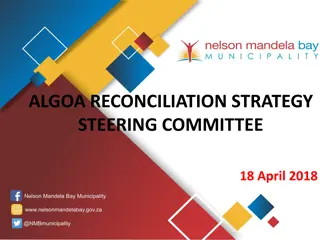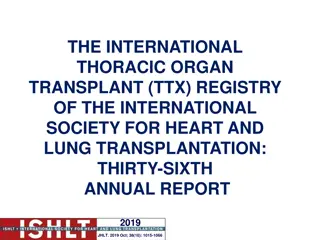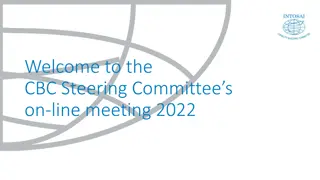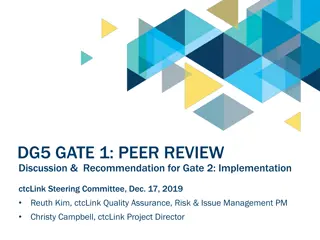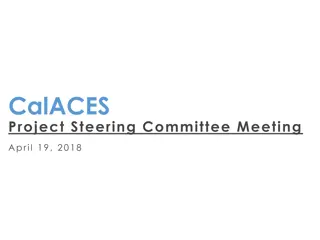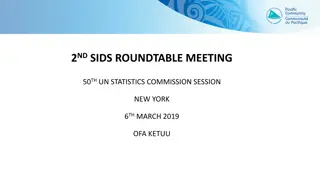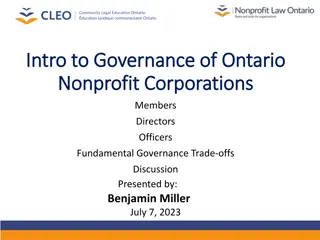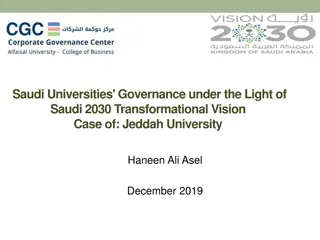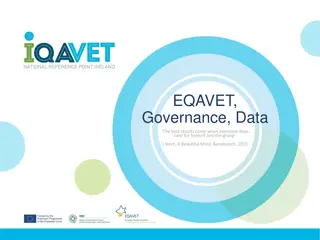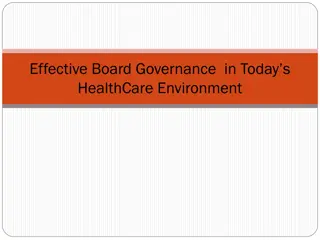ePAG Steering Committee Governance Update Summary
The ePAG Steering Committee is working on governance aspects and templates for ePAGs, focusing on patient engagement and transparency. The committee aims to establish clear requirements for patient organizations, formalize relationships between ERNs and patient organizations, and integrate rules for patient engagement within ERN governance frameworks. The new approach includes two levels of patient engagement (Associate Partners and Supporting Partners) and aims to enhance transparency and clarity in ERN bylaws. Key achievements include developing new templates and agreements for patient engagement within ERNs.
Download Presentation

Please find below an Image/Link to download the presentation.
The content on the website is provided AS IS for your information and personal use only. It may not be sold, licensed, or shared on other websites without obtaining consent from the author. Download presentation by click this link. If you encounter any issues during the download, it is possible that the publisher has removed the file from their server.
E N D
Presentation Transcript
GOVERNANCE UPDATE ePAG Steering Committee Jan 2022 Gareth Davies, In s Hernando, Lenja Wiehe
Mandate, membership and update Ad-hoc sub-group of the ePAG Steering Committee to work on governance aspects and templates that can be used across all ePAGs. The composition varies depending on the work that needs to be done and the availability and interests of ePAG leads/SC members. Jan-April 2021: Allison, Dalia, Johan, Simone, Astri, Marie Claude + In s 1. An updated template for ePAG Terms of Reference (ToR) 2. An online application form for ePAG advocates 3. A checklist to assess compliance with ePAG ToR EYE, GENTURIS and CRANIO ERN Coordinators approached EURORDIS to review their governance frameworks for patient engagement Oct-Nov 2021: Gareth Davies, Dominique Sturz + Olivia Spivack/CRANIO ERN PM and Doroth e Leroux/EYE ERN PM + In s 1. New template to include relevant sections on patient engagement in the ERN bylaws 2. New ePAG ToR template to ensure consistency with the new template for ERN bylaws 3. New template -Agreement between ERNs and PO that have designated an ePAG advocate 4. New template Supporting Partner template for individual patients and family members and patient organisations with no designated ePAG advocate in the ERN 2
1. Methodology 1. Analysis and comparison of ERN Eye and CRANIO existing governance rules: rights and obligations of HCP full members, associate partners and ePAG advocates. 2. Identify innovative approaches used by ERNS to formally engage with patient organisations: a) Associate Partners (EURACAN). The Associate Partners may be relevant societies or groups involved in education, training, patient advocacy group, research groups, scientific societies EORTC, ESMO , ESTRO, etc., alongside Patient Organisations. b) Supporting Partners (eUROGEN). According to the European Commission s document on terminology issued on 20 June 2018, it is proposed to use the term Supporting Partner as a generic term to define healthcare providers, medical societies, and any other entity or individual experts which, without having a commercial relation with the ERNs and their Full Members or Affiliated Partners, or with the European Commission, contribute in different ways to the work of the networks . eUROGEN grants this status to HCPs, medical societies, and any other entity or individual experts and individual patients and family members with specific expertise who are willing to contribute to the activities of the network. Such individuals are not represented by a patient organisation and therefore are not considered as ePAG advocates. 3. Develop new templates with the objective of better integrating the rules for patient engagement within the ERN governance framework - 4 templates 3
What do we want to achieve with this new approach? #1. Establish 2 levels of patient engagement in the ERNs (Associate Partners and Supporting Partners). #2. Formalise the relationship between the ERN and the patient organisations. #3. Establish clear requirements for patient organisations, rights and obligations and include them in the ERN bylaws for greater transparency and clarity. 4
#1-Two levels of patient engagement in the ERNs Individual patients and family members and SM- based support groups 1. Legally registered and operates in Europe (48 countries), representing patients and families living with a rare disease that belong to the scope of the ERN. This registration requirement can be waived in exceptional cases. 2. Has a governing board made up of a majority patients or of family members of patients. This requirement can be waived in exceptional cases. 3.Is financially independent, particularly from the pharmaceutical industry (max. 50% of funding from several companies). 4. Holds non-profit status. 5. Has proven activities such as patient support and/or advocacy activities and/or research. Patient Organisations registered outside Europe May be may be invited to collaborate with the ERN and the ePAG on specific tasks and projects Patient Organisations registered in Europe Patient Organisations that do not have a representative in the ePAG. They may be willing to collaborate on specific tasks (e.g. respond to surveys), help to disseminate information about the ERN, be kept informed on the development of the ERN activities Patient Organisations registered in Europe that have designated an ePAG advocate Supporting partners 5 Associate Partners
#1-Two levels of patient engagement in the ERNs (cont) Associate Partners Application process is very similar process to the existing one, but looking also at the requirements of the PO (greater involvement of ERN project managers see slide 9) Ends with signature of Associate Partner agreement between the ERN and the Patient organisation Supporting partners PO, individual, SM-based group will contact the ERN project management team to express their interest in engaging as a Supporting partner. The ERN project management team will request a motivation letter and the CV of the contact person who will act as a liaison with the Network, the individual patient or family member or the social media-based support group. The application will be considered by an Evaluation Committee composed by a clinical lead, an ePAG representative and the ERN Project Manager who will approve the collaboration with the Supporting Partner or submit an advice to the ERN Board when approval in unclear. 6
#2 - Formalise the relationship between the ERN and the patient organisations 7
#2 Establish clear requirements, rights and obligations for PO ePAG advocates skills and experience Benefits Responsibilities application process .) Levels of engagement Requirements for Associate and Supporting partners Rights and obligations of Associate Partners (PO) Note: the ERN Bylaws as well as the Rules for Associate Partners representatives will be sent with the application package 8
Associate Partners representatives (ePAG advocates) Application Process Applicant provides additional info to PM team and ePAG leads Patient organization signs agreement and sends it back to PM team Initiates Application Submits Applicant application form Including all accompanying documents Adds name to EURORDIS contact database Notifies applicant of rejection EURORDIS Receives application and sends to ERN PM team and ePAG leads End of the process End of the process Approval is through agreement in the ePAG and in consultation with ERN Coordinator Yes Reviews the skills & experience of candidate with all ePAG advocates Informs EURORDIS of the decision and grounds for rejection All OK? Requests additional info from applicant Missing info ePAG Leads All OK? Yes No No Yes ERN PM Team Adds ePAG advocate name to ERN website and notifies EURORDIS Notifies applicant and sends Associate Partnership Bilateral Agreement to PO Informs EURORDIS of the decision and grounds for rejection Checks whether the Patient Organization meets the requirements foreseen in the ERN bylaws/ToRs Requests additional info from applicant All OK? Missing info Yes All OK? No No
Q&A 10
